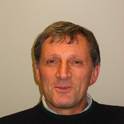Ultra‐high‐field NMR spectroscopy requires an increased bandwidth for heteronuclear decoupling, especially in biomolecular NMR applications. Composite pulse decoupling cannot provide sufficient bandwidth at practical power levels, and adiabatic pulse decoupling with sufficient bandwidth is compromised by sideband artifacts. A novel low‐power, broadband heteronuclear decoupling pulse is presented that generates minimal, ultra‐low sidebands. The pulse was derived using optimal control theory and represents a new generation of decoupling pulses free from the constraints of periodic and cyclic sequences. In comparison to currently available state‐of‐the‐art methods this novel pulse provides greatly improved decoupling performance that satisfies the demands of high‐field biomolecular NMR spectroscopy.
Available at: http://works.bepress.com/naum_gershenzon/82/
